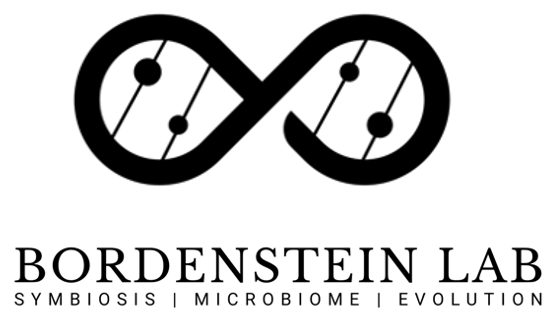Symbiosis | Microbiome | Evolution
The Bordenstein Lab
The Bordenstein laboratory endeavors to understand and disseminate the principles that shape interactions between animals, microbes, and viruses and the basic and translational outcomes of these interactions.
The Bordenstein laboratory accelerates knowledge on the rules of microbial symbiosis and microbiome variation within and between host species to (i) disseminate long-lasting principles, patterns, and concepts on the interactions between animals, microbes, and viruses and (ii) to establish positive outcomes for human health.
Our scholarship leverages a wide range of methods and subdisciplines spanning bacteriology, biochemistry, development, ecology, embryology, evolution, genetics, genomics, transcriptomics, virology, and zoology. Through our science and education, Sarah Bordenstein directs the distinguished and discovery-based lab series Discover the Microbes Within! The Wolbachia Project that engages pre-college and college students worldwide in nature and real-world research of their own on biodiversity, biotechnology, and bioinformatics. Seth Bordenstein directs the world’s first One Health Microbiome Center – one of the largest and most active microbiome centers housed in the Huck Institutes at Penn State University.
Key questions that drive the science and translational outcomes:
- What are the rules of human microbiome variation, and how do they intersect with health disparities?
- How does a bacteriophage in an endosymbiont underpin a global pandemic (Wolbachia) and a major mosquito control strategy?
- What are the rules of microbiome and virome variation across host species? What genetic factors influence phylosymbiosis?
- How do microbes assist the origin of new host species?
- How can science education rethink student achievement for high schools, colleges, and citizen scientists? How can students infuse themselves in discovery-based research to learn scientific concepts, make new discoveries, and apply hands-on biotechnology?
Summary of Illustrative Findings: Species interactions are fundamentally important aspects of the biosphere. Microscopic entities including bacteria and their viruses, bacteriophages, exhibit profound genomic diversity and often exert functional significance on host fauna and flora. The Bordenstein Laboratory investigates the evolutionary genetic and functional principles that shape the rules of engagement between animals, bacteria, and viruses. We study two forms of symbiotic interactions: intimate and facultative.
In intimate symbioses between inherited, parasitic bacteria (Wolbachia) and arthropods, we discovered the long-sought genes in Wolbachia endosymbionts that selfishly kill male embryos (wmk gene) and control sperm development in a processed termed cytoplasmic incompatibility (cifA and cifB genes). These three genes occur in a novel, genetic module of prophage WO of Wolbachia that contains an unprecedented menagerie of genes with eukaryotic-like DNA and annotated functions in eukaryotic cell biology. We discovered that the cytoplasmic incompatibility factor proteins invade animal gametic nuclei and wreak havoc on gametic epigenetic processes involved in sexual reproduction, including regulatory long non-coding RNA and the histone-to-protamine transition fundamental to sperm maturation. Some of the genes in this prophage module have also transferred across the tree of life into animal genomes and Archaea where they function as thermotolerant, antibacterial peptides.
By studying facultative interactions between animals and their microbiomes, we demonstrated one of the rare, cross-system trends in the microbiome field that host phylogenetic relationships frequently mirror their microbiome relationships. We termed this new pattern “phylosymbiosis” in 2013, and experimental transplants of microbiomes between related species specify that phylosymbiosis arises due to selection pressures. Furthermore, our human microbiome analyses reveal the influences of human genetics on the microbiome and disease; and our dietary intervention trial reinforces our discovery that self-identified social groups such as ethnicity and race have a persistent association with gut/oral microbiome and virome variation in the United States.
